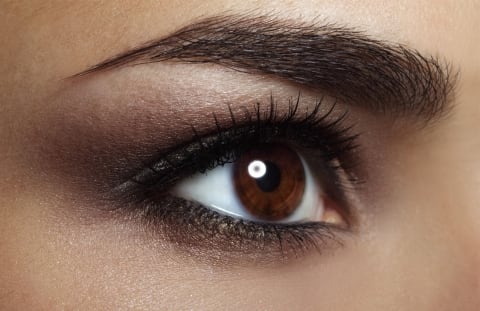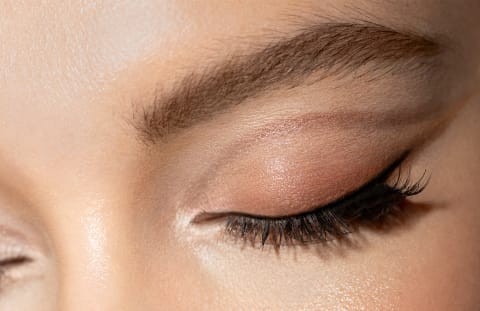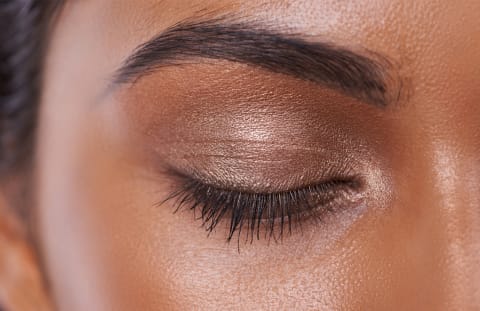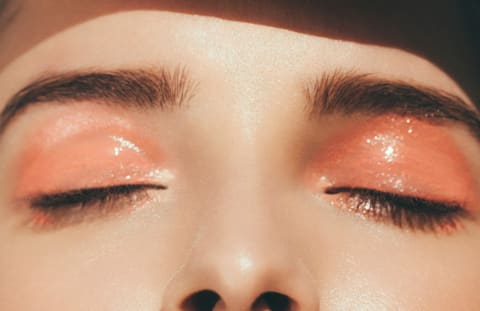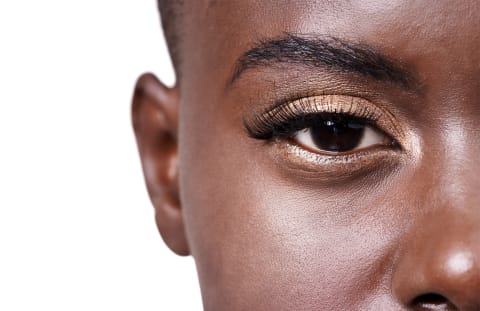And never was this more true than with eyeshadow. While eyeshadow is considered a staple item that isn’t going anywhere, it’s come a long way from its origin story. Eye makeup has been around since before the time of Cleopatra. But with so many options from powders to creams to liquids and even glossy looks, it’s completely understandable if you walk down the makeup aisle and feel overwhelmed. Powders can be applied with your fingers or brushes. You can also increase the intensity or turn them into liner shades by using a damp brush. Depending on the quality, powders can have serious staying power and be richly pigmented so that they appear true on all skin tones. One drawback of this shadow type is that it can often feel like you have something on your eyes depending on the quality of the gloss you pick. Of all the options, eyeshadow glosses probably have the steepest learning curve as it’s easy to apply too much and look greasy rather than on-trend. Some people will prefer to use their fingers to apply shadows, while others like the sharpness of eyeshadow brushes. Similarly, if you’re the type who likes to use eyeshadow on places other than just your lids, you may find that a blending sponge is equally effective. And later in the article, we get into individual looks, which will also factor into what method you use. Essentially, what’s “best” is what works for you. Global makeup artist Natasha Moore notes that “…the cream formula will not last as long as a powder. It’s important to apply an eyeshadow primer to your lids first. Let it dry. Then apply the cream shadow.” In particular, if you’re attempting to wear makeup for extended periods (i.e., all day for a wedding) or are going to be out in hot weather or hot lights where you’re likely to quickly sweat it off, or you’re attempting more stylized eye looks (think cut creases), a primer is essential. Depending on who you talk to, you don’t always need to pick a primer specifically marketed as an eyeshadow base. New York–based MUA Justyna Santiago adds that she likes to “use concealer to carve out my eyebrows, then apply the concealer all over my lid. Make sure it is blended evenly so that there is no excess product. Then take your favorite translucent powder with an eyeshadow brush and set it.” For some clean options, check out our favorite concealers here. For best results, use brushes because you need to diffuse the colors. Start by applying the neutral color as your all-over base across the entire lid. Then apply the deep tone just to your crease “starting from the outer corner of your eyes to about a third of your eye.” Patel reminds us to “blend, blend, blend, and blend some more to avoid harsh lines.” Finish by applying the light color above your crease starting from the inner eye up to the edge. Note this color can also be your brow bone highlight. Some people call this look an “eyelighter” (sort of like a highlighter—get it?). See, you’re “carving” your eyelids with a shimmery shadow. This detail helps every eye shape catch the light in just the right places, thus making the orbs appear brighter and wide-awake. Take it from makeup artist Alexandra Compton, product development manager at Credo: “By adding a wash of shimmer to the lid, light is actually catching the particles of iridescent pigment and reflecting back, like thousands of tiny mirrors creating the illusion of brighter eyes,” she tells mbg. If this is your first attempt, less is more. You can always add more gloss if needed, but applying too much at first means you’ll need to start over.


